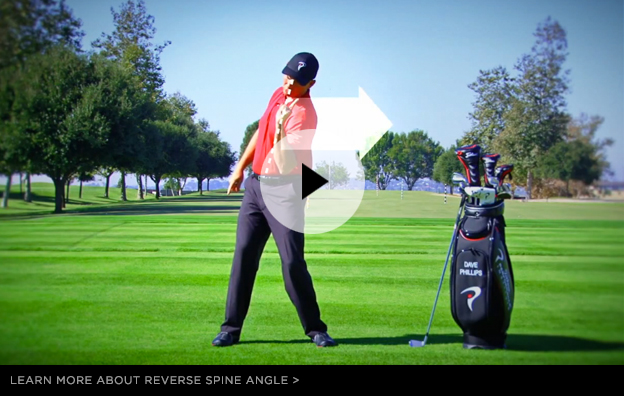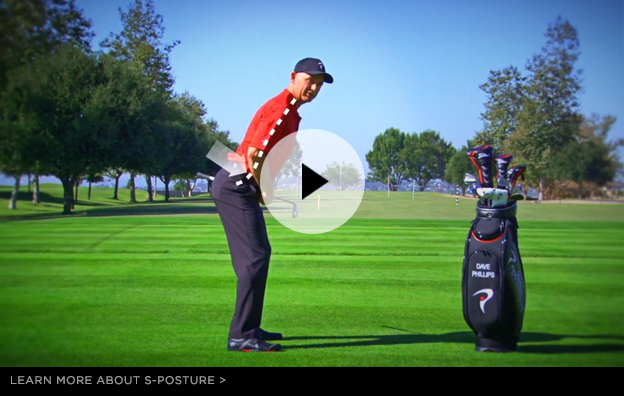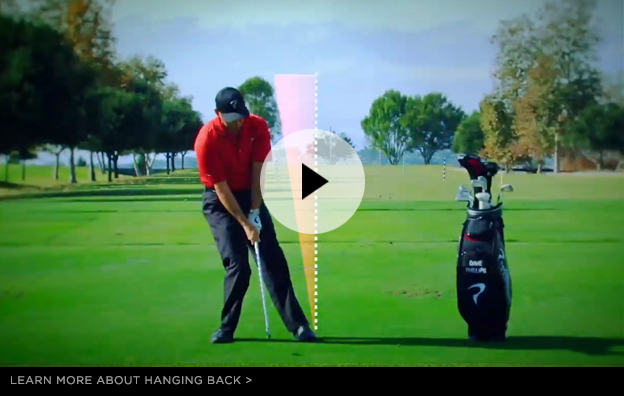IMPROVE MY GAME
Articles
The Most Important Considerations for Treating Golfers With Lower Back Pain
If you want to build a thriving golf practice, you need to be able to treat a variety of golf-related injuries, but you need to be especially proficient with lower back injuries.
That's one of our goals for everyone who takes our Medical Level 2 online course and/or Level 3 seminar.
Lower back pain is by far the most common ailment suffered by golfers of all ages. Based on data collected at TPI from over 31,000 golfers, 28.1% of all players deal with lower back pain after every round. Lower back pain is also the most common complaint seen amongst professional golfers on all tours (data suggest over 23% play with lower back pain). To understand the cause of lower back pain, it requires a thorough investigation of what we call the Body-Swing Connection™. Let’s take a closer look.
First of all, let me start by making a bold statement. The lower back is rarely the original cause of the pain! It may be the current source of the pain, but it’s rarely the cause of the pain. More often than not, abnormal motions or forces coming from adjacent or distant areas of the body force the lower back to do excessive work until it completely breaks down itself. In other words, the lumbar spine is usually the area that is being unnecessarily overworked to the point of injury. It is basically the over-used and over-abused worker who just goes and goes until he or she breaks.
In my experience, the lack of mobility seen in the ankles, hips, thoracic spine and shoulders of many golfers forces the lower back to carry all of these excessive loads and is the primary cause for most back injuries. So any article about lower back pain should address those areas specifically.
When the lower back finally does break down, you can typically expect one of the following conditions to occur:
- Muscle Strain or Ligamentous Sprain - A muscle strain or “pulled muscle” as well as an injured ligament will usually resolve itself in 2-4 weeks with plain old rest and recovery. However, there can be some residual muscle stiffness, fascial restrictions, joint fixations or movement alterations that may need to be addressed afterwards. Sprains or strains are the most common form of lower back injury we see. Symptoms may range from a minor ache to a sharp debilitating pain. Most sprains and strains are localized in the lower back region, meaning pain does not radiate into the butt or leg. The chemical inflammation around the injury is usually sore to the touch and the pain usually subsides with rest.
- Disc Injury - The lumbar intervertebral disc acts as a spacer between adjacent vertebrae to help absorb compressive forces and create space for the spinal nerves to exit the spinal column. Imagine the disc as a jelly filled donut. If excessive or abnormal stressors are placed on the disc, tears can occur. When this happens, the force of the jelly against that tear can cause a bulge in a portion of the donut leading to a “bulged disc.” In more severe cases, the jelly can actually exit through the donut wall leading to a “ruptured disc.” The discs are also susceptible to degenerative changes over time. To continue the analogy, imagine the jelly inside of the donut drying up. Any of these disc problems can leave the spinal nerves vulnerable to irritation or compression resulting in dysfunction and pain. Most disc pathologies create radiating pain into the buttocks or the leg (think sciatica) due to the irritation of spinal nerves. Sitting for prolonged periods of time, bending forward into a slouched position, or lifting heavy objects can all exacerbate disc symptoms.
- Altered Joint Mechanics or Motor Control - Interestingly, the brain can completely change the lumbar spine’s ability to move just by changing which muscles are firing or by altering the sequence of when muscles fire. This can occur in the absence of any visible injury. These altered motor control or joint mechanics can begin as a protective mechanism, but can lead to chronic problems over time. Most experts believe over 80% of all chronic lower back problems begin this way.
- Degenerative Arthritis - Just like all joints, with over-use, abuse, or even lack of use, spinal joints can become arthritic. Bone spurs and osteophytes act like stalactites and stalagmites inside a cave closing in on the opening for the spinal nerves. With time, these bony outgrowths can fuse joints, irritate nerves and create general inflammation in the area. Stenosis, the narrowing of the canal or cave that houses the spinal nerves is a very common problem with arthritic changes. Most arthritic problems in the spine create sharp pain with certain movements. The resulting inflammation can then cause chronic dull pain over time.
- Bone Fracture - Stress fractures and pedicle fractures (spondylolysis) are common problems seen in the lumbar spines of rotational athletes. This occurs due to the rapid extension and rotation of the spine, causing adjacent vertebrae to collide into each other at their end range of motion. This action places high forces on the posterior portions of the vertebrae and can lead to these types of fractures. Injuries of this sort can lead to deep dull pain and instability in the spine.
So the big questions are:
- How do I help a patient prevent their lower back from getting injured?
- How do I treat their injury once it occurs?
Let’s start by talking about prevention. The best way to prevent lower back injuries in golf is to attack the problem head on with three main offensives:
- Normalize Movement Patterns
- Optimize Swing Mechanics
Normalize Movement Patterns
(from Medical Level 2 online course)
The first line of defense against lower back pain is to create optimal movement patterns in the areas directly above and below the lumbar spine - the hips and thoracic spine. The golf swing requires great rotational mobility to develop and transfer energy to the club. That mobility should come from the joints in the body that are designed to rotate, the hips and the thoracic spine. If you study the anatomy of the lumbar spine, you will see that the spinal joints, called facets, are orientated to allow flexion and extension, not rotation. If the lower back is forced to be a primary rotator due to a lack of hip and thoracic mobility, it's only a matter of time before an injury will occur in the lumbar spine. It is important to remember that the hips and thoracic spine do not operate in isolation. Abnormal motion in the ankle can cause poor hip motor control. And poor motion in the shoulder can cause poor thoracic spine motor control. Therefore, we can’t neglect the ankle or shoulder joints in our assessments.
So in order to unravel the mystery of why someone has lower back pain, we must first evaluate the movement patterns of all the surrounding areas. At TPI, we teach a combination of our Level 1 movement screen and the SFMA (Selective Functional Movement Assessment) to identify any of these altered movement patterns and make a true starting diagnosis. Once the dysfunction has been identified, we attack all mobility restrictions first and then create the stability required to normalize motor control. When the areas above and below the lumbar spine are functioning properly, the lumbar spine can gain some much-needed rest. Once normal movement patterns are optimized, a solid conditioning program is the best form of prevention. We encourage all players to build a solid base of strength and to maintain proper mobility in order to keep their lower back healthy for a lifetime.
Optimize Swing Mechanics
When it comes to optimizing swing mechanics, it is easy to see how some common swing characteristics can induce abnormal stressors into the lower back. The most common characteristic is Reverse Spine Angle (RSA). This is usually caused by a lack of rotary mobility in the hips and thoracic spine causing the lumbar spine to extend excessively in order to pick up some much needed range of motion. Because RSA puts excessive extension in the spine at the top of the backswing, the player must excessively flex and right side bend to get back to impact, a bad combination. This combination of movements has been proven to add compressive and shear stress to the lumbar spine. My saying for Reverse Spine Angle goes like this, “It’s not if you’re going to get lower back pain, it’s when are you going to get lower back pain!” Learn more about Reverse Spine Angle below.
The second most common swing characteristic that can lead to lower back problems is S-Posture. This is typically a set-up problem and often begins before the player even takes the club back. S-Posture places the lumbar spine into something called the Lower Crossed Syndrome Pattern. This is an extremely common postural adaptation to muscle imbalances created by prolonged static postures, like sitting at a desk for years on end. With Lower Crossed Syndrome, the abdominal and gluteal (stomach and butt) muscles become inhibited or weak due to over-activation or tightness in the hip flexors and lower back. Due to this imbalance in the muscles surrounding the lumbar spine, excessive stress is placed on the structures of the lower back. S-Posture also helps encourage Reverse Spine Angle since the lumbar spine is already excessively extended at the start of the swing. Learn more about S-Posture below.
The third most common swing characteristic that can lead to lower back issues is called Hanging Back. Hanging Back can force a player to excessively right side bend through impact. This can put added stress onto the right side of the lumbar spine and lead to lower back injuries. Some players hang back or add right side bend in an attempt to open the clubface through impact. This is a very common compensation for a closed clubface in the golf swing. Additionally, many players with lower back pain can become tentative in their swing and may exacerbate the problem by not properly shifting weight forward in the downswing, hanging back instead. Learn more about Hanging Back below.
The best practitioners in the world don't just treat acute pain. They are able to help identify potential causes of pain, whether injury inducing mechanics in the golf swing or movement dysfunction elsewhere in the body.
If you'd like to learn more about our advanced Medical courses, check out Medical Level 2 (via online course) here and Medical Level 3 (via in-person seminars) here.


